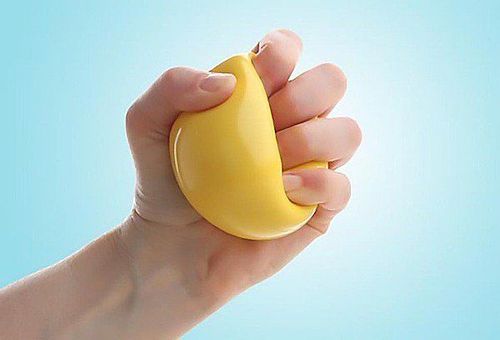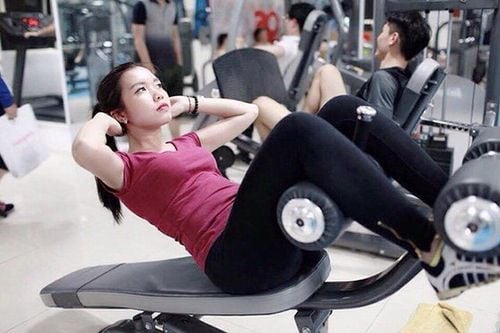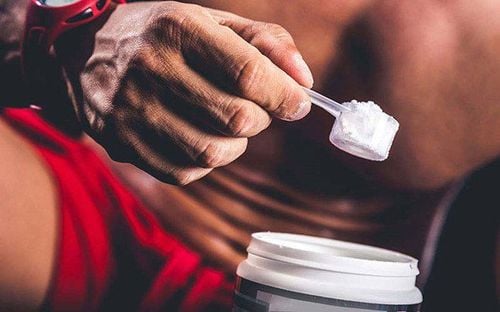This is an automatically translated article.
Healthy hands not only reflect the health status of each person but also help with daily activities. To have a pair of healthy hands will depend on many factors not only strong muscles. The article will provide information about exercises to strengthen the hands.1. What muscles give strength to the hands?
First of all, it's important to note that grip strength is more than just the strength of your hands. Grip strength involves everything from the muscles near your elbow to your fingertips.During the grip, most of the muscles used originate between the elbow and the upper part of the forearm bone, scientifically known as the thumb flexor, flexor, and flexor - and down to the thumb or finger.
2. Types of grip strength
When it comes to the things we hold in our hands, there are four main defined forms of grip, which require different techniques and muscles. They are:Crushing: The act of closing a finger to resist. Similar to clamping (wrapping fingers around something and pressing towards the palm) and folding (directing fingers towards the ring line). Pinch: The act of grasping something with the thumb as opposed to the finger. This can be done both statically (no motion) or dynamically (moving). Lifting: The act of lifting something with your fingers taking up most of the load. Extend: The act of opening the fingers and thumb.

Lực cầm nắm không chỉ là sức mạnh của tay bạn
3. How to test the strength of the handle
You will need a hand-held dynamometer, which will measure the maximum isometric strength of the hand and forearm muscles. For accurate results, you should perform three squeezes on both hands.Some gyms may have these - most physiotherapists and general practitioners have - but you can also buy them.
For a more thorough (and truer) reflection of grip strength, you can also use - additionally, not as a substitute for hand-held dynamometers - a clamping strength test, measuring isometric strength maxima of the hand and forearm muscles when performing the pinch. Based on multiple tests of different ages, fitness levels and athletic abilities.
4. Stretching exercises for wrists and hands
Your hands perform a variety of tasks every day, from gripping the steering wheel to typing on the keyboard. These repetitive movements can create weakness and stiffness in your wrists and fingers.Practicing hand strengthening exercises can help prevent injury. Hand strength exercises can strengthen your wrists and keep your hands and fingers flexible.
5. Importance of wrist and hand stretch
Strengthening hand exercises increase flexibility and help reduce the risk of injury. Stretching is recommended as a precaution or for mild pain relief. However, people with inflammation or severe joint injury should not use them unless recommended by a healthcare professional. In some cases, exercise can do more harm to your wrist or hand.You should talk to your doctor before trying a stretch or new treatment. It is important to perform these exercises to determine the exact cause of your wrist pain first.
6. Simple arm and wrist stretch
There are some easy wrist stretches you can do at your desk.Stretch position
While standing, place palms together in prayer position. Let your elbows touch each other. Your hands should be placed in front of you, and your arms should touch each other from fingertips to elbows. Squeeze your palms together, then slowly extend your elbows. Do this move along with lowering your arms to hip level. Stop when your hands are in front of your navel or feel a stretch. Hold the stretch you're doing for 10 to 30 seconds, then repeat. Extend one arm in front of you and lift to shoulder height. Keep your palms facing down, and make sure they are facing the floor. Relax your wrists so that your fingers are pointing downwards. With the other hand, gently grasp the fingers and pull them toward the body. Hold for 10 to 30 seconds. Arm Extensions: To stretch in the opposite direction:
Extend your arms with palms while pointing this pose towards the ceiling. With your other hand, gently press your fingers into the floor. Then gently pull your fingers towards your body. Hold for 10 to 30 seconds. Repeat both stretches with the other arm. You should cycle two or three times with each arm.
Clenching hands
While sitting, place your open hands on your thighs and palms up. Slowly close your hands into fists. Do not grip too tightly. With your forearm touching your leg, raise your fist away from your leg and back into your body, flexing your wrist. Hold for 10 seconds. Lower your fist while slowly extending your fingers. Repeat 10 times.

Bài tập duỗi tay và cổ tay
7. Build Hand and Wrist Strength
Building wrist strength can also help you prevent injury during exercise. There are several exercises you can use to build strength, whether you're at home or in the office.Press pad
While sitting, place your palm face down under the table or table. Press up on the bottom of the workbench. Hold for 5 to 10 seconds. This exercise builds strength in the muscles that run from your wrist to your inner elbow.
Squeeze the tennis ball
Squeeze the tennis ball or stretch ball hard for 5 to 10 seconds.
This should be painless. However, this activity will allow you to strengthen your wrists.
Working thumbs
Push-ups:
Clenched fists and thumbs up, as if you were giving a disliking signal. Create resistance with your thumb along with your hand muscles to keep your thumb still. Gently pull your thumb back with your other hand while holding this position for a few seconds and repeat this movement. Pulling exercise:
Make a fist and point the thumbs up. Build resistance with your entire hand with your thumb and hand muscles to try to keep your thumb pointing toward the ceiling. Use your other hand to gently push your thumb forward. Hold and repeat.
8. Yoga for Wrists and Hands
Yoga is a great way to strengthen your wrists and hands. Several hand and wrist exercises can be made up of yoga.Figure eight
Interlace your fingers and place them in front of the body. Keeping your elbows drawn to your sides, move your interlaced hands in a figure-eight motion. Keep your wrists fully rotated so that each hand rests alternately on the other and vice versa. Do this exercise for 10 to 15 seconds. Rest, and then repeat. While sitting, you must lift your arms above your head while interlacing your fingers with your palms. With fingers interlaced, face palms up until all are facing the ceiling. You can also keep your arms slightly bent or straight. Hold stretch. Lower your arms, then repeat. Reach
This exercise stretches the muscles in the forearm and hand. It also increases flexibility and promotes circulation.
Eagle arm
This exercise is adapted from Eagle Pose.
Extend your arms forward while making sure they are parallel to the floor. Cross your right arm over your left, with your right arm on top. Bend your elbows. Place your right elbow on the left crook while making sure the backs of your hands are touching. Move your right arm to the right along with moving your left arm to the left. The thumb of the right hand should cross the little finger of the left hand. The two palms should face each other. Press your palms together, then continue to lift your elbows and extend your fingers. They should be directed towards the ceiling. Resist the urge to lift your shoulders as you raise your arms. Hold for 15 to 30 seconds. Repeat on the other side. You can minimize or even avoid hand pain with a few simple stretches. First, ask your doctor if these stretch marks are safe for you, especially if you've had an injury. Once you've moved on, don't hesitate to take some time each day to do these intervals, especially if you have a job that requires hours of typing.
Please dial HOTLINE for more information or register for an appointment HERE. Download MyVinmec app to make appointments faster and to manage your bookings easily.
Reference source: healthline.com












